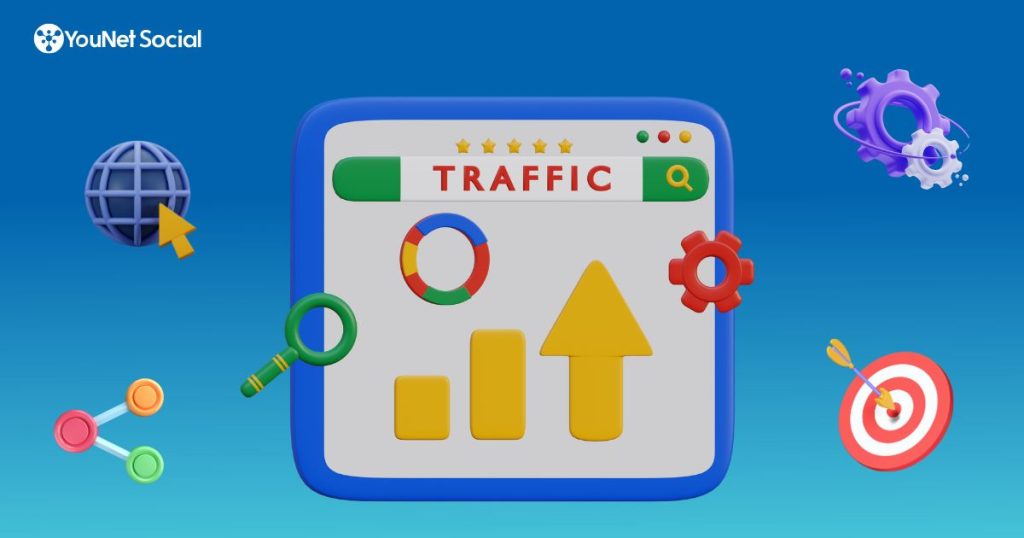

Building a scalable web application is not just about accommodating more users to your site; it’s about ensuring that your application can gracefully adapt to the changing needs of a user base and data load that are constantly rising.
This article discusses the value of scalability for expanding your web application and business, explains how scalability plays a part in software architecture and development, and offers some tips for creating scalable web applications.
Why Scalability is Important to Your Business?


The ability of a web application to accommodate growing workloads and user traffic without sacrificing performance, dependability, or user experience is known as scalability. A business can maintain or improve its efficiency as its sales volume rises due to its scalability.
The need for scalability becomes apparent as web applications gain popularity and user engagement surges. E-commerce platforms are a typical example of the need for colossal scalability, especially during monthly and yearly promotions when the number of people accessing the application is vast. A web application that can’t scale properly may experience slow load times, downtime, or even complete failure during traffic spikes. Such issues can result in frustrated users, leading to losing revenue to competitors and damaging your brand’s reputation.
When Should Business Owners Enhance the Scalability of their Platform?
Scalability improvements are essential to ensure the platform can handle increased demand and maintain a positive user experience. Business owners should consider enhancing the scalability of their platform under some ordinary circumstances to operate smoothly and avoid unnecessary risks.
Increasing User Base: When there is a noticeable and sustained increase in the number of users accessing the platform, it’s a clear sign that scalability enhancements are needed.
Seasonal Peaks: For businesses with seasonal fluctuations in traffic, such as e-commerce websites, during holidays or monthly seasons, it’s crucial to prepare for peak periods in advance.
Launching New Features: Introducing new features or functionalities can attract more users and increase usage. Business owners should assess whether the existing infrastructure can support these additions or if adjustments are needed to maintain performance.
High-Traffic Events: Events such as product launches, marketing campaigns, or partnerships can lead to sudden spikes in traffic. Preparing for these events with scalability improvements is essential to avoid downtime and capitalize on the increased interest.
Competition: If competitors offer similar services with better performance and scalability, it signals that improvements are needed to remain competitive.
Technology Advancements: Advancements in technology, such as new cloud services or more efficient frameworks, may present opportunities to enhance scalability and reduce infrastructure costs. Staying up-to-date with technology trends can lead to scalability improvements.
How To Make a Scalable Web Application?


Evaluate priorities and resources
Firstly, identifying the core features of your application is a need to prioritize them based on user demands and business goals. Furthermore, allocating resources wisely by focusing on essential development areas and avoiding unnecessary features. Remember that scalability will be interpreted differently depending on the growth and challenges systems.
There are no specific terms for the scalability types, but it can be considered in three basic categories: horizontal, vertical, and diagonal scaling. While horizontal scaling allows adding more machines to your server, vertical scaling allows adding more power to your device. These two types can be combined thanks to diagonal scaling.
Use proven techniques and practices
Incorporating time-tested engineering methodologies and architectural frameworks such as microservices, serverless computing, and containerization is essential to foster adaptability and scalability. These methodologies encompass various techniques that serve different aspects of application improvement. Some of these techniques aim to alleviate the database workload and enhance overall backend efficiency, while others prioritize the acceleration of client applications and the establishment of system stability and reliability.
For instance, implementing caching and load balancing facilitates rapid response times, while indexing, replication, and mirroring techniques enable efficient web concurrency. By embracing these proven techniques and practices, you can fortify your web application’s foundation for scalability and performance.
Monitor and measure performance
Most cloud platforms offer comprehensive toolkits designed to enhance performance visibility and control. It is imperative to incorporate robust monitoring and logging solutions into your web application infrastructure to monitor real-time performance metrics continuously. Key performance indicators (KPIs) are crucial for evaluating your application’s responsiveness, latency, and resource utilization.
Additionally, establish alert systems and notifications to address any performance-related issues that may arise proactively. By harnessing these cloud-based resources effectively, you can monitor your web application’s performance and respond swiftly to any deviations from an optimal operation.
Read more: Scalability and Performance Optimization: Building for Growth
Use cost optimization tools
Harness the cost optimization tools and services provided by cloud providers to maximize the efficiency of your resource utilization. Integrate auto-scaling mechanisms that can dynamically fine-tune resource allocation in response to fluctuating demand, effectively mitigating unnecessary expenses during periods of reduced traffic.
Consider the context for geo scalability
Analyze your target audience’s geographic distribution and adjust your infrastructure accordingly. Employ Content Delivery Networks (CDNs) to serve content from servers closer to users. Implement multi-region redundancy strategies to ensure high availability and fault tolerance. Additionally, leverage geo-distributed databases to reduce curtail latency and enhance the experience for global users.
Emphasize Security and Regulatory Compliance
Give paramount importance to security practices and adherence to regulatory requirements to safeguard user data. Consistently prioritize measures that ensure the protection of user information and strict compliance with relevant regulations. Regularly conduct thorough audits and assessments to gauge the security posture of both your infrastructure and applications.
Conclusion
Developing a scalable web application is a continuous journey that demands creative architecture, vigilant monitoring, and proactive optimization. By adhering to these guidelines and maintaining agility in your approach, you can fashion a web application that seamlessly expands alongside your user base, upholding exceptional performance and cost-effectiveness, ultimately driving your business toward success.
At YouNet Social, we offer Scaling and Web Performance services tailored to your business needs. Our services encompass comprehensive testing and tailored web application and mobile platform solutions. Leverage the expertise of our professionals to achieve optimal results aligned with your unique requirements. Please contact us if you are interested in our services and would like to get more information. Our consultants are happy to receive your tickets.




